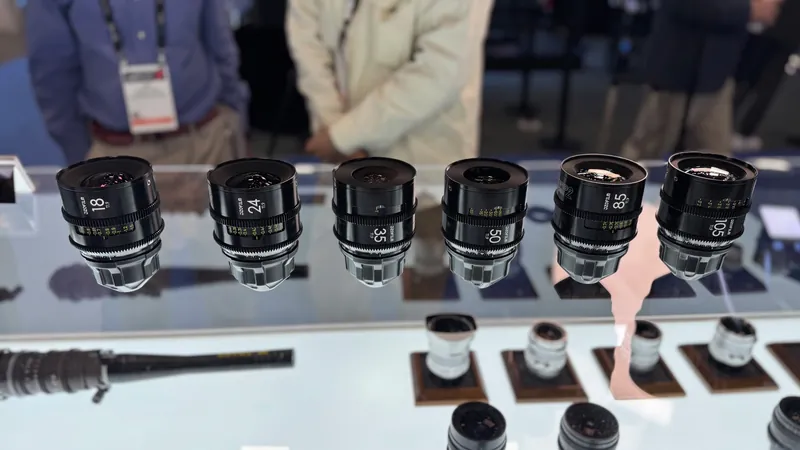
Unveiling the Hidden Faces of Autism: Why Women Have Been Overlooked
2025-04-01
Author: John Tan
Introduction
Did you know that boys are ten times more likely to be diagnosed with autism than girls? In fact, research shows that when referred for assessment, boys are more than twice as likely to receive an autism diagnosis compared to their female counterparts. This raises a significant concern: is our understanding of autism too narrowly defined by a male perspective?
The Overlooked Plight of Autistic Women
While many sources proclaim autism as a "male problem," emerging studies and testimonies suggest a troubling oversight: the plight of autistic women who have been largely invisible in the discussions surrounding this neurodevelopmental condition.
Surprisingly, teachers are often biased in their diagnoses; they are much more likely to classify a hypothetical child as autistic if that child has a "male" name like "Jack," instead of a "female" name like "Chloe." Girls who are diagnosed with autism may wait several years longer than boys for assessment due to stereotypes surrounding the condition. Alarmingly, research indicates that up to 80% of women on the spectrum initially receive incorrect diagnoses, such as social anxiety or eating disorders, obscuring the underlying issue of autism.
Changing Voices
Fortunately, the tide is turning. Online communities, such as the Late Discovered Club for late-diagnosed autistic women, have emerged, giving a voice to those who have long been told that "autism is just for men." Personal stories from newly diagnosed women have begun to highlight a significant flaw in how we perceive autism and its manifestations in different genders.
Research Bias and its Consequences
But why were women sidelined in the first place? A severe bias in autism research has meant that over 30% of studies only involved male participants. The Autism Brain Imaging Data Exchange, founded in 2012, showcased this issue, with a staggering 88% of data sets coming exclusively from males. This blind spot has led to a cycle of misunderstandings and misdiagnoses.
The stereotype of autism perpetuated by films like *Rain Man* has heavily influenced public perception, often neglecting the reality faced by women on the spectrum. Clinicians developed diagnostic checklists reflecting traits predominantly observed in males, inadvertently creating a framework that marginalized female experiences. Traits such as intense ambition to fit in and master social cues—the very behaviors that classify women as "successful"—were largely overlooked.
Evolving Understanding of Autism
As discussions around autism evolve, more research is focusing on the nuances of female presentation. Women often embody a phenomenon known as "camouflaging," where they hide their symptoms to fit into social norms, leading to significant mental health challenges down the line, such as anxiety and depression.
Now, scientific awareness is beginning to shed light on the differences in how autism manifests across genders. Studies show that, rather than seeking isolation, many autistic women are intensely focused on social connection, albeit struggling with the necessary skills to achieve meaningful interactions. Their autism may present as an intricate dance of attempting to blend in while battling intense feelings of inadequacy.
The Need for Re-evaluation
This calls for a re-evaluation of autism diagnostic criteria, recognizing that the traditional criteria do not capture the full spectrum of behaviors exhibited by women. Researchers are now being urged to consider the experiences of women actively, shifting the landscape of autism research toward a more gender-inclusive model.
Broader Implications
The impact of these discussions extends beyond autism alone. Misunderstandings about sex differences in diagnosis affect how all psychiatric disorders are approached—and highlight the importance of including lived experiences in research. Recognizing the overlap between conditions like eating disorders and autism is critical for effective treatment and support.
Conclusion
Ultimately, the narratives of late-diagnosed women reveal a profound need for societal change—one that challenges outdated stereotypes and promotes understanding. It is crucial to inform educators, health professionals, and the general public that autism is not exclusive to boys. By fostering awareness and inclusive practices, we can ensure that all individuals on the spectrum, regardless of gender, receive the support they need to thrive.
As we uncover the hidden stories of autistic women, we are presented with an opportunity not only to embrace diversity within the autism community but also to foster a more compassionate society that values each individual's unique experience. It’s time to break free from old narratives and shine a light on the "missing women of autism." Together, we can strive for a more inclusive future.




 Brasil (PT)
Brasil (PT)
 Canada (EN)
Canada (EN)
 Chile (ES)
Chile (ES)
 Česko (CS)
Česko (CS)
 대한민국 (KO)
대한민국 (KO)
 España (ES)
España (ES)
 France (FR)
France (FR)
 Hong Kong (EN)
Hong Kong (EN)
 Italia (IT)
Italia (IT)
 日本 (JA)
日本 (JA)
 Magyarország (HU)
Magyarország (HU)
 Norge (NO)
Norge (NO)
 Polska (PL)
Polska (PL)
 Schweiz (DE)
Schweiz (DE)
 Singapore (EN)
Singapore (EN)
 Sverige (SV)
Sverige (SV)
 Suomi (FI)
Suomi (FI)
 Türkiye (TR)
Türkiye (TR)
 الإمارات العربية المتحدة (AR)
الإمارات العربية المتحدة (AR)